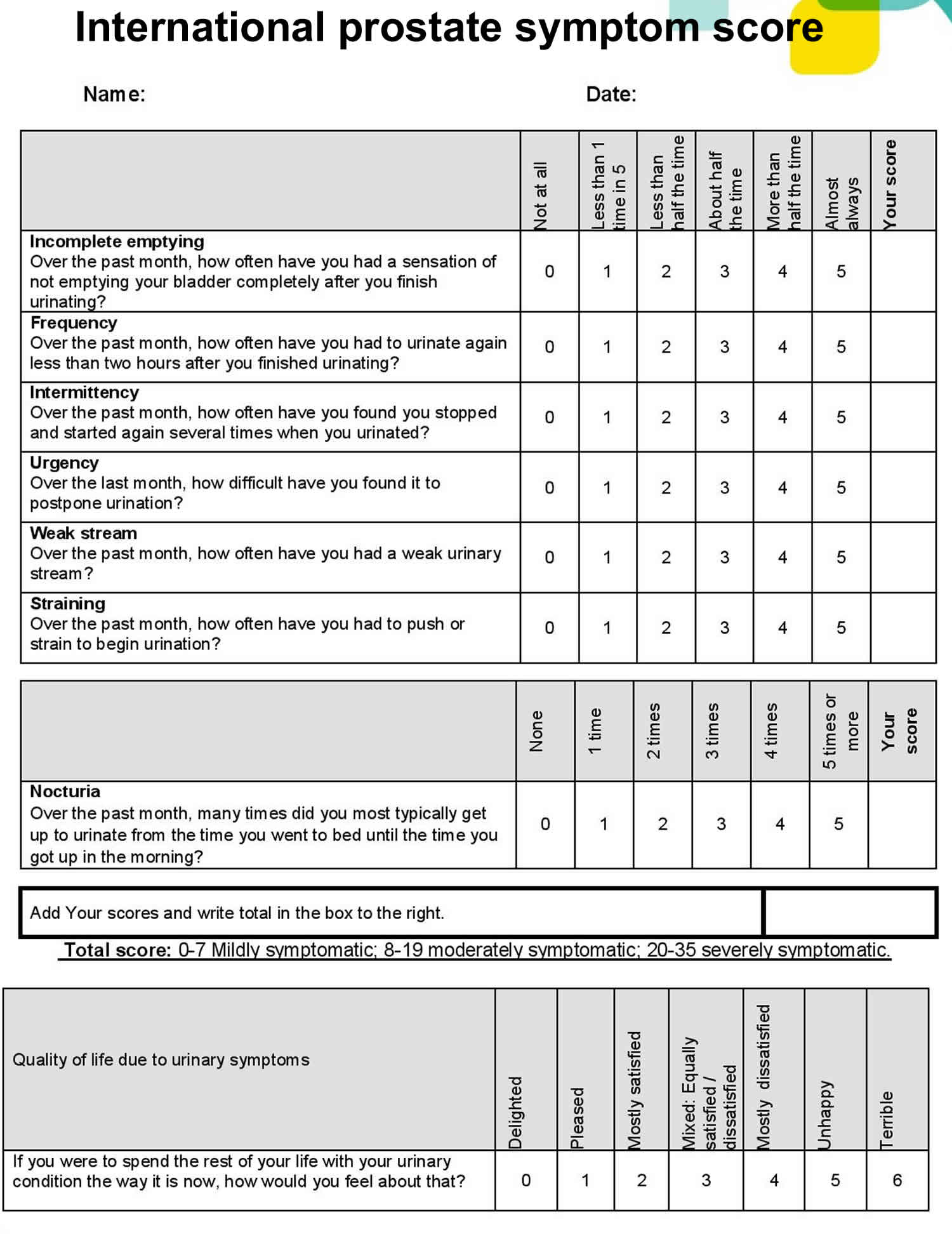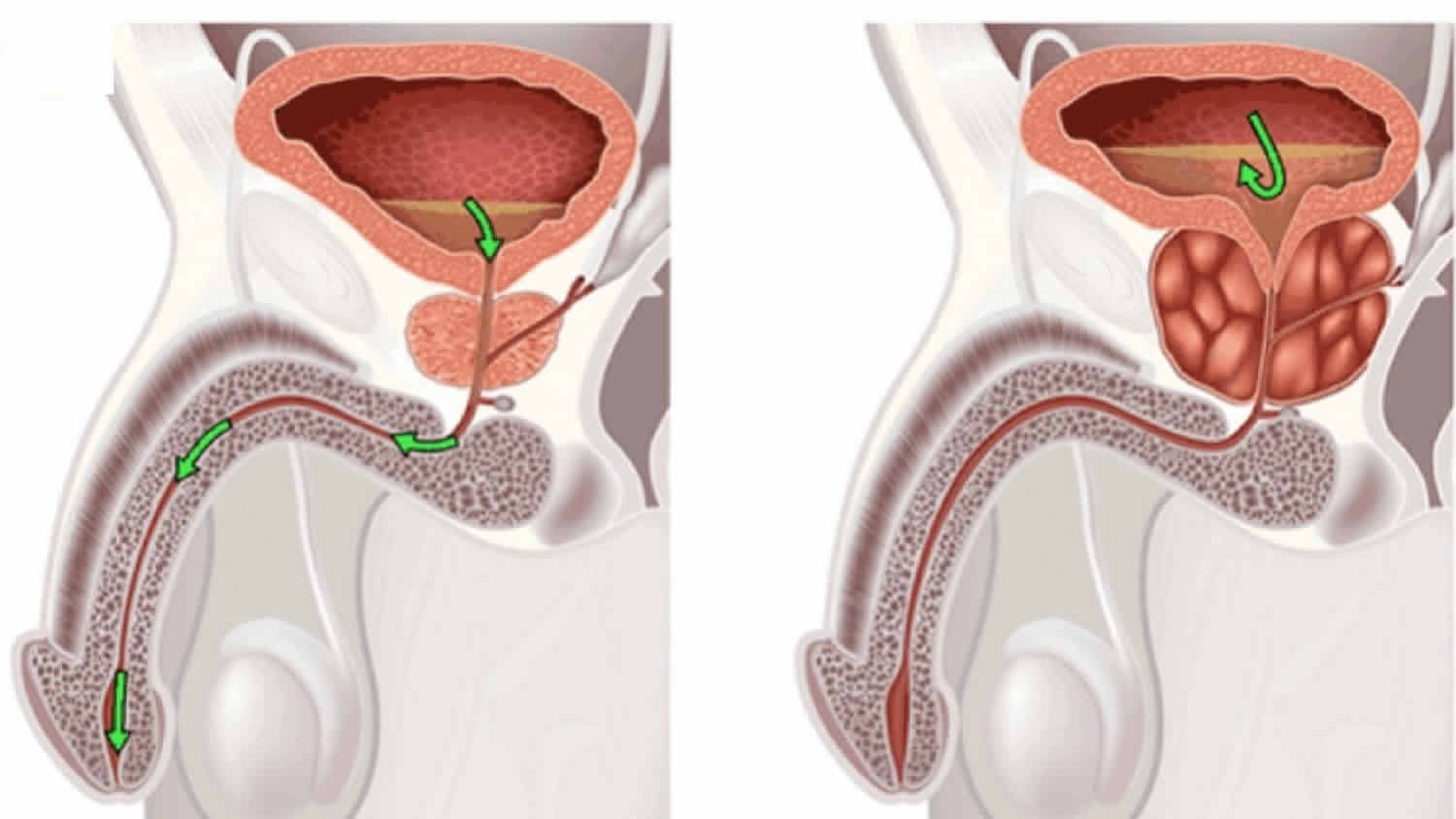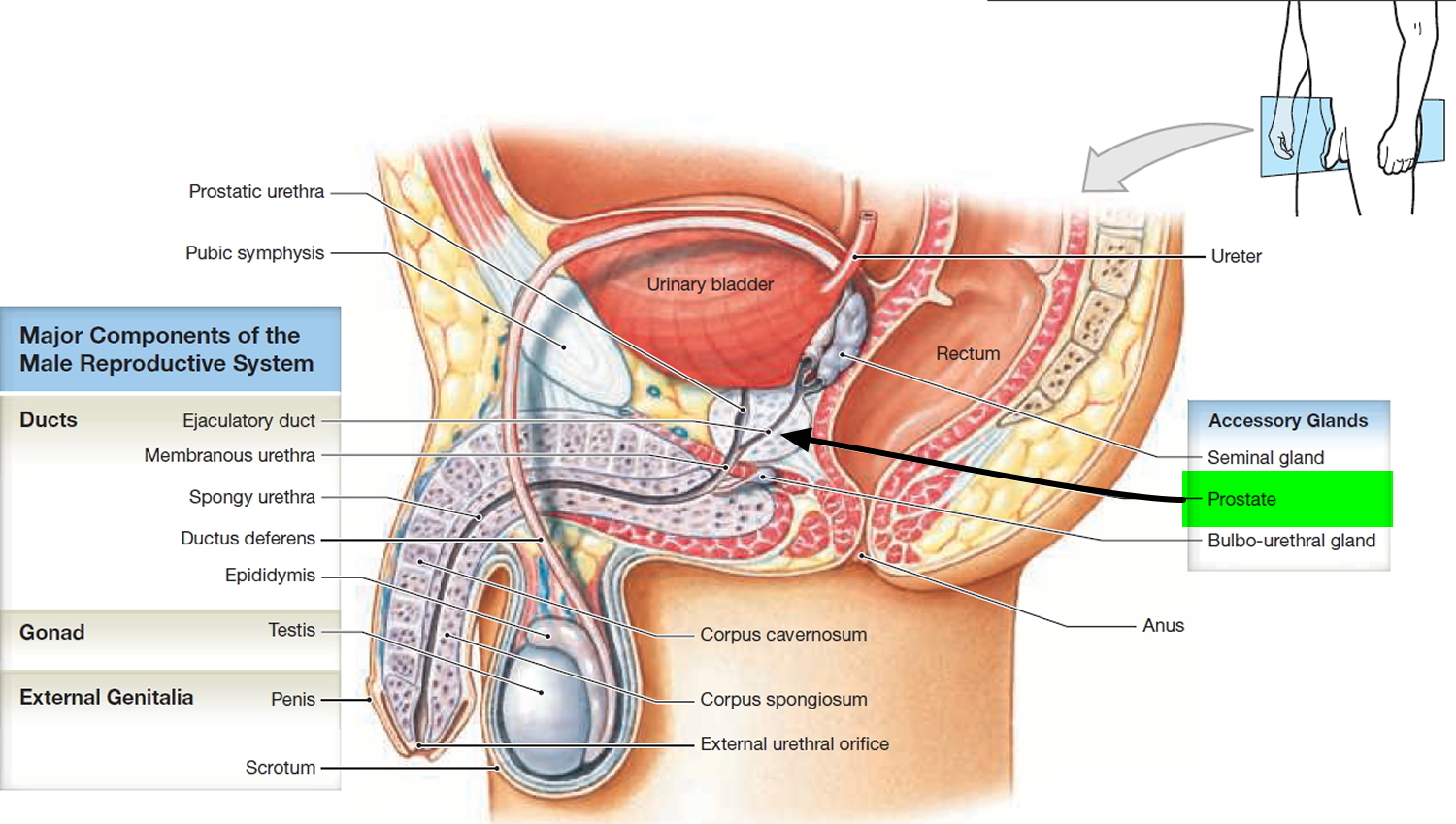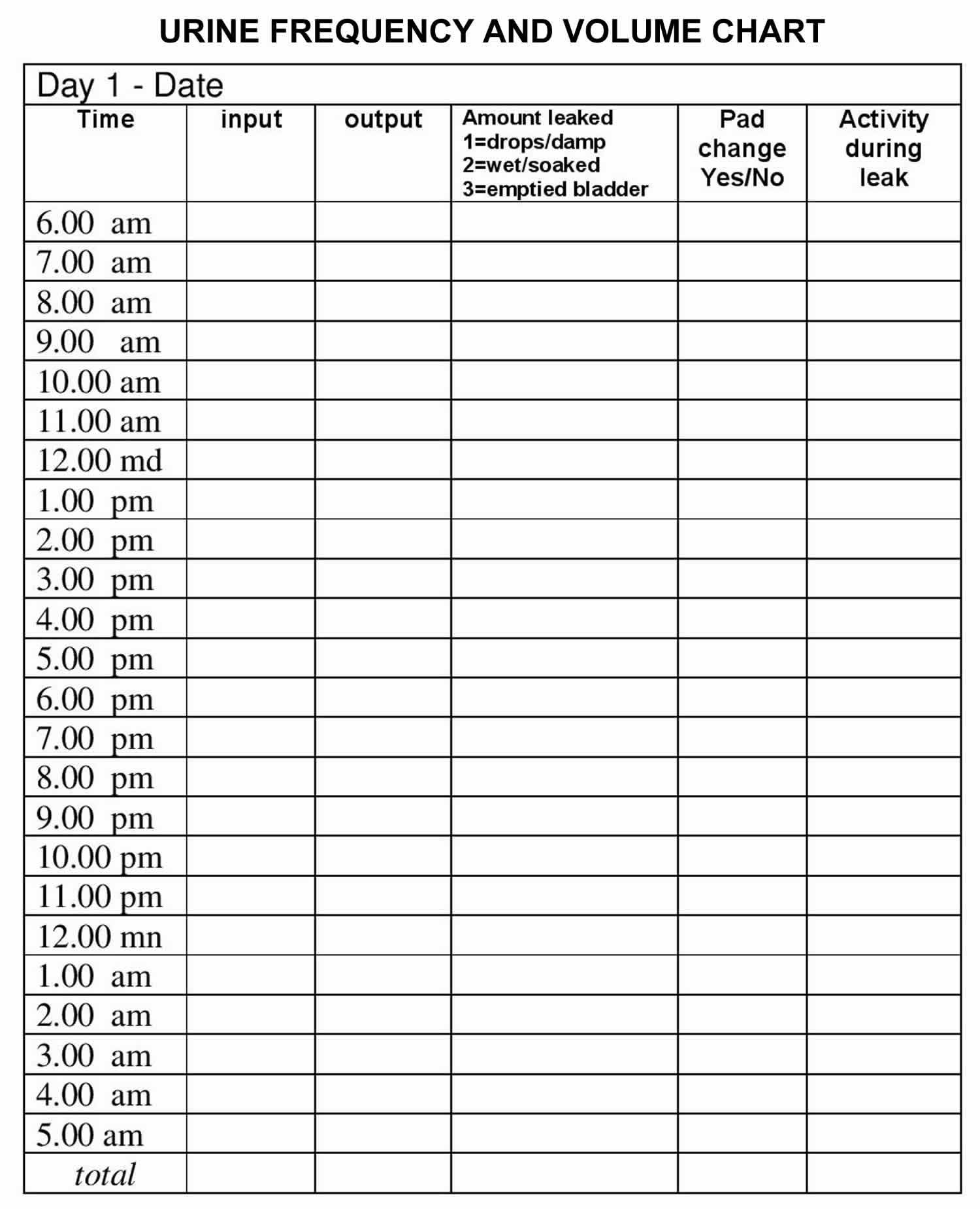Contents
What is an enlarged prostate
Enlarged prostate is also called benign prostate hypertrophy (BPH), is an enlargement of the prostate gland that commonly arises after you reach the age of 50 1. Benign prostate hypertrophy, also called prostate enlargement, is a non-cancerous enlargement of the prostate gland. The prostate enlarges slowly, and over time puts increasing pressure on the urethra and the base of the bladder, blocking the flow of urine. This is what causes the symptoms of benign prostate hypertrophy. Enlarged prostate can cause symptoms that interfere with your ability to urinate and affect your sex life. This slow prostate growth is a normal part of aging, but in some men it grows too large. The reasons for this are not clear.
The size of the prostate and the severity of the symptoms aren’t always directly related 1. Some men with a very enlarged prostate have few symptoms, while others have a lot of problems even though their prostate is only slightly enlarged 1.
Many men worry that having an enlarged prostate means they have an increased risk of developing prostate cancer. This isn’t the case.
The risk of prostate cancer is no greater for men with an enlarged prostate than it is for men without an enlarged prostate.
Urinating frequently, getting up in the night to go to the toilet, and the feeling that your bladder is never really empty are all typical signs of a benign enlarged prostate.
Enlarged prostate is rare for men under the age of 40. About 20 out of 100 men between the ages of 50 and 59 are affected. In older age the typical symptoms become increasingly common: Up to 70 out of 100 men over the age of 70 have a benign enlarged prostate 1.
The prostate is located right underneath the bladder, and surrounds part of the urethra. If the prostate becomes enlarged, it may push against the bladder, urethra and bladder muscles. This means that men might feel the need to urinate even though their bladder isn’t at all full. The constant pressure can also weaken the bladder muscles. As a result, the bladder can no longer empty itself completely. The pressure on the urethra may prevent urine from flowing out normally, too.
Symptoms of an enlarged prostate include:
- finding it difficult to start peeing
- straining to pee
- having a weak flow of urine
- “stop-start” peeing
- needing to pee urgently and/or frequently
- needing to get up frequently in the night to pee
- accidentally leaking urine (urinary incontinence)
Many men adapt and cope well with these symptoms. For some men, though, it is a big problem: they might have to go to the toilet so often that they no longer get enough sleep at night, and feel exhausted during the day. That can cause problems in their personal lives and at work.
Although a benign enlarged prostate can be very bothersome, it is usually not dangerous. If treatment is needed, there is generally no reason to rush into anything.
When to seek medical advice
- See your doctor if you have any of the symptoms on this page.
- Even if the symptoms are mild, they could be caused by a condition that needs to be investigated.
- Any blood in the urine must be investigated by your doctor to rule out other more serious conditions.
What and where is the prostate?
The prostate is a gland found only in men, which forms an important part of the male reproductive system. The prostate gland secretes a fluid that keeps sperm alive and healthy and that forms part of semen.
The prostate is a chestnut-shaped structure that surrounds the urethra and ejaculatory ducts. The prostate is found behind the base of the penis and immediately underneath the urinary bladder. It measures about 2 × 4 × 3 cm and is an aggregate of 30 to 50 compound tubuloacinar glands enclosed in a single fibrous capsule. These glands empty through about 20 pores in the urethral wall. The stroma of the prostate consists of connective tissue and smooth muscle, like that of the seminal vesicles. The thin, milky secretion of the prostate constitutes about 30% of the semen.
The urethra, the tube that carries urine from the bladder to the penis, runs through the middle of the prostate.
The prostate slowly increases in size from birth to puberty. It then expands rapidly until about age 30, after which time its size typically remains stable until about age 45-50, when further enlargement may occur, constricting the urethra and interfering with urine flow.
In addition to its susceptibility to prostate cancer and tumors, the prostate is also subject to infection in sexually transmitted diseases (STDs). Prostatitis, inflammation of the prostate, is the single most common reason that men consult a urologist.
Figure 1. Prostate gland
Enlarged prostate signs and symptoms
The prostate is located right underneath the bladder, and surrounds part of the urethra. There are usually no symptoms at the start, even after the prostate has started to enlarge. The first sign of benign prostate hypertrophy is usually problems with urinating. This is because the enlarged prostate is squeezing and narrowing the urethra and may push against the bladder and bladder muscles. This means that men might feel the need to urinate even though their bladder isn’t at all full. The constant pressure can also weaken the bladder muscles. As a result, the bladder can no longer empty itself completely. The pressure on the urethra may prevent urine from flowing out normally, too.
In some men, the symptoms are mild and don’t need treatment. In others, they can be very troublesome.
The symptoms of benign prostate hypertrophy can include:
- difficulty starting to pee
- straining to pee
- having a weak flow of urine
- “stop-start” peeing
- needing to get up frequently in the night to pee, which can disturb your sleep if you need to urgently empty your bladder at night
- accidentally leaking urine (urinary incontinence)
- inability to completely empty the bladder when peeing
- poor urine flow
- a frequent need to pee
- urgent need to pee
- dribbling of urine at the end of peeing
- bladder infections
Occasionally, benign prostate hypertrophy interferes with your ability to have sex, causing impotence or painful orgasms.
Leaking urine can happen when you feel a sudden need to pee and can’t stop some pee leaking out before you get to a toilet. This is called urge incontinence.
Leaking urine can also happen when you strain, for example when you cough, sneeze or lift a heavy object. This is stress incontinence.
The most common form of leaking is when a small amount of urine dribbles into your underwear after peeing.
Signs of enlarged prostate:
- Urinating frequently, getting up in the night to go to the toilet, and the feeling that your bladder is never really empty
Some men with an enlarged prostate keep on getting urinary tract infections.
- Occasionally, men with an enlarged prostate quite suddenly have difficulties urinating, or can’t urinate at all. Known as acute urinary retention (anuria), this condition is an emergency and needs to be treated immediately. First, a catheter is used to relieve the bladder. A few days later, part of the prostate is surgically removed to allow the urine to flow normally.
Urinary retention is relatively rare, occurring in 1 to 3 out of 100 men with a benign enlarged prostate every five years 1.
What causes enlarged prostate
The causes of an enlarged prostate are not clear. It becomes more common as you age – half of men over the age of 60 have some symptoms. It is also related to testosterone (a male sex hormone) and may run in families.
Enlarged prostate diagnosis
To diagnose benign prostate hypertrophy, your doctor will ask about your symptoms and your concerns, and their impact on your quality of life.
Although problems with urination are most commonly caused by an enlarged prostate, they can be caused by other things too. To narrow down the possible causes, a doctor will ask how often you have to urinate. Many people find it difficult to say exactly how often they go to the toilet, so it might be helpful to keep track for one or two days before going to the doctor (use the urinary frequency-volume chart and International Prostate Symptom Score questionnaire). It also makes sense to tell the doctor what medications you take because some medications can actually cause urinary problems
You may be asked to complete:
- A urinary frequency-volume chart. This will give a record of how much water you normally drink, how much urine you pass, and how often you empty your bladder on a daily basis, as well as any leakage you have (see Figure 2).
- International prostate symptom score questionnaire. The International Prostate Symptom Score questionnaire allows your doctor to better understand how serious your symptoms are (see Figure 3).
Your doctor should perform a physical examination. They may examine your stomach and genital areas.
They may also feel your prostate gland through the wall of the back passage (rectum). This is called a digital rectal examination (DRE).
Your doctor may order a blood test to check that your kidneys are working properly.
They may advise you to have a prostate-specific antigen (PSA) blood test to rule out prostate cancer. Prostate cancer can increase the PSA levels. But high PSA levels can be caused by many other things too – including a benign enlarged prostate. For this reason, and because the PSA test isn’t very reliable anyway, its use in men with an enlarged prostate is controversial. So it’s a good idea to carefully consider the pros and cons.
A urine test can be done to help detect signs of a prostate infection or urinary tract infection. Both cause similar symptoms to those of an enlarged prostate. Urine can be tested for a variety of other illnesses, too.
A urine flow test (uroflowmetry) can be done to see how much urine flows out per second. To do this test, you urinate with a full bladder into a special instrument that can measure the speed of the urine flow.
Ultrasound scans can be used to see how large the prostate is. They can also be done to see how much urine is left over in the bladder after urinating (residual urine).
Figure 2. Urine Frequency and Volume Chart
Figure 3. International prostate symptom score
 [Source 2]
[Source 2]
Referral to a urologist
Your doctor may refer you to a urologist or other appropriate specialist if:
- previous treatments have not helped your urinary problems
- a urinary infection does not go away or comes back regularly
- you cannot fully empty your bladder
- you have kidney problems
- you have stress incontinence: when urine leaks out at times when your bladder is under pressure; for example, when you cough or laugh
You should also see a specialist if your doctor is concerned that your symptoms could be caused by cancer, although for most men cancer is not the cause.
To help find out what might be causing your symptoms and decide how best to manage them, you should be offered additional tests to measure:
- how fast your urine flows
- how much urine is left in the bladder after you have peed
You may also be offered other tests, depending on your symptoms or the treatment you and your doctor are considering.
Enlarged prostate treatment
The choice of treatment for a benign enlarged prostate mostly depends on how bad the symptoms are, whether there are complications such as frequent urinary tract infections (UTIs), and what you think about the advantages and disadvantages of having treatment.
Benign prostate hypertrophy treatment usually depends on your symptoms. Treatment options include:
- Active monitoring of symptoms (often called “watchful waiting”): If the symptoms are mild and there are no complications, it may be enough to change a few things in everyday life and go in for a check-up about once a year. This strategy helps in about 30 out of 100 men who seek medical help because of an enlarged prostate.
- Medication: About 70 out of 100 men who seek medical advice for an enlarged prostate opt for medication. The most commonly used medication is called tamsulosin. It relaxes the prostate and bladder muscles, making it easier to urinate.
Surgical procedures to reduce the size of the prostate: Various surgical procedures can be used to remove or destroy prostate tissue. Possible reasons for having surgery include urinary retention, recurring infections and severe symptoms that can’t be relieved in any other way. Some men make a conscious decision to have surgery after they have considered the advantages and disadvantages of different treatment options. Ejaculation problems are one common side effect of these procedures. Incontinence or erection problems are rare. - Surgery – you may need transurethral resection of the prostate (TURP) if the symptoms are significantly affecting your daily life. There are also other types of surgery, including laser therapy and transurethral incision of the prostate
What to do for enlarged prostate
Lifestyle changes
You might be able to relieve the symptoms by making some simple changes to your lifestyle.
You may be able to reduce the symptoms of prostate problems by:
- avoiding alcohol and caffeine, which can both make you urinate more often
- avoiding spicy or acidic foods, which can irritate your bladder
- avoiding drinking late in the evening to reduce the chances of having to urinate during the night
- avoiding sitting or bicycling for too long, as these can irritate the prostate
- making sure you drink plenty of water to flush bacteria from your bladder
- increasing the amount of fruit and fiber you eat to avoid constipation, which can put pressure on your bladder and your prostate
- avoiding the unnecessary use of cold and allergy medicines such as decongestants and antihistamines, which can affect muscles in the bladder
- sitting in a warm bath to ease symptoms.
Drink fewer fizzy drinks and less alcohol, caffeine and artificial sweeteners
Fizzy drinks and drinks that contain alcohol, caffeine (like tea, coffee or cola) and artificial sweeteners can irritate the bladder and make urinary symptoms worse.
Drinking less in the evening
Try to reduce the amount you drink in the evening and avoid drinking anything for 2 hours before you go to bed. This might help you avoid getting up in the night. Make sure you’re still drinking enough fluid earlier in the day.
Remember to empty your bladder
Remember to go to the toilet before long journeys or when you know you won’t be able to reach a toilet easily.
Double voiding
Double voiding involves waiting a few moments after you have finished passing urine before trying to go again. It can help you empty your bladder properly. But take care not to strain or push.
Checking your medicines
Check with your doctor whether any medicines you take, such as antidepressants or decongestants, may be making your urinary symptoms worse.
Eating more fruit and fiber
Eating more fruit and fiber will help you avoid constipation, which can put pressure on the bladder and worsen symptoms of an enlarged prostate.
Using pads or a sheath
Absorbent pads and pants can be worn inside your underwear, or may replace your underwear altogether. These will soak up any leaks.
Urinary sheaths can also help with dribbling. They look like condoms with a tube coming out of the end. The tube connects to a bag that you can strap to your leg under your clothing.
Bladder training
Bladder training is an exercise programme that aims to help you go for longer without peeing and hold more pee in your bladder.
You’ll be given a target, such as waiting at least 2 hours between each time you pee.
It’s a good idea to use a bladder training chart (see Figure 2. Urine Frequency and Volume Chart), which allows you to record each time you pass urine and the volume of urine passed – you’ll need a plastic jug to measure this. Your doctor should give you a chart to take home.
You’ll also be taught a number of exercises, such as breathing, relaxation and muscle exercises, to help take your mind off the need to pee.
Over time your target time will be increased, and at the end of the programme you should find you’re able to go for longer without peeing.
Ask your doctor or specialist nurse for more information about any of these lifestyle changes.
Herbal medicine products
There are several over-the-counter herbal products for the relief of symptoms associated with a benign enlarged prostate. Most of these products haven’t been well studied and there isn’t enough reliable evidence about how well they work or how safe they are. Others have been studied, but weren’t found to reduce prostate symptoms. So herbal supplements aren’t generally recommended for the treatment of benign enlarged prostates. Herbal treatments may also cause side effects or interact with other medicines.
Enlarged prostate medication
If lifestyle changes don’t help or aren’t suitable for you, you may be offered medicine.
Alpha-blockers
- Alpha blockers relax the muscle in the prostate gland and at the base of the bladder, making it easier to pass urine. Commonly used alpha-blockers are tamsulosin and alfuzosin.
Anticholinergics
- Anticholinergics relax the bladder muscle if it’s overactive.
5-alpha reductase inhibitors
- 5-alpha reductase inhibitors shrink the prostate gland if it’s enlarged. Finasteride and dutasteride are the two 5-alpha reductase inhibitors available.
Diuretics
- Diuretics speed up urine production. If taken during the day, they reduce the amount of urine produced overnight.
Desmopressins
- Desmopressins slow down urine production so less urine is produced at night.
Catheters
If you continually have trouble peeing, a condition called chronic urine retention, you may need a catheter to drain your bladder.
A catheter is a soft tube that carries urine out of the body from the bladder. It can be passed through your penis, or through a small hole made in your tummy above the pubic bone.
You may be recommended a removable catheter or a catheter that stays in your bladder for a longer period of time.
Enlarged prostate surgery
Most men with urinary symptoms don’t need to have surgery, but it may be an option if other treatments haven’t worked.
Transurethral resection of the prostate (TURP)
TURP involves removing part of the prostate gland using a device called a resectoscope that’s passed through the urethra (the tube through which urine passes out of the body). It’s suitable for men who have an enlarged prostate.
Open prostatectomy
During an open prostatectomy, the prostate gland is removed through a cut in your body. It’s suitable for men who have an enlarged prostate over a certain size.
Prostatic urethral lift (PUL) implants
A surgeon inserts implants that hold the enlarged prostate away from the urethra so it isn’t blocked. This helps to relieve symptoms like pain or difficulty when peeing.
Cystoplasty
Cystoplasty is a procedure to increase the size of the bladder by sewing a piece of tissue from the intestine into the bladder wall. This may help men whose bladder muscle contracts before it’s full.
Prostate artery embolization
A catheter is inserted into an artery in your groin or wrist. Using X‑ray guidance, it’s passed into the blood vessels that supply the prostate gland.
Tiny plastic particles are injected into these vessels to reduce the prostate gland’s blood supply, which shrinks it.
Potential benefits of prostate artery embolisation compared with surgery are fewer complications and you can have the procedure under local anaesthetic as an outpatient.
Botulinum toxin
This procedure involves injections of botulinum toxin into the walls of the bladder. It may help men whose bladder muscle contracts before the bladder fills.
Implanted sacral nerve root stimulation
A small electrical device is implanted under the skin and sends bursts of electrical signals to the bladder and urine system for better control. This is suitable for men whose bladder muscle contracts before the bladder fills.
Urinary diversion
Urinary diversion involves linking the tubes connecting the kidneys to the bladder directly to the outside of the body, so the urine can be collected without flowing into the bladder.
This method is suitable for men whose symptoms can’t be managed by self-management and medicine, and who can’t have – or don’t want – cystoplasty or sacral nerve root stimulation.
Water vapor ablation
Water vapor ablation is a new treatment for prostate enlargement. Steam is injected into the prostate using a probe passed up the urethra. The heat from the steam destroys some of the prostate tissue, making it smaller.
Water vapor ablation is probably less likely than a TURP to cause side effects.
But not all surgeons are currently trained to carry out the procedure. So access to this treatment may be limited and waiting lists for it may be longer than for other surgical options.







